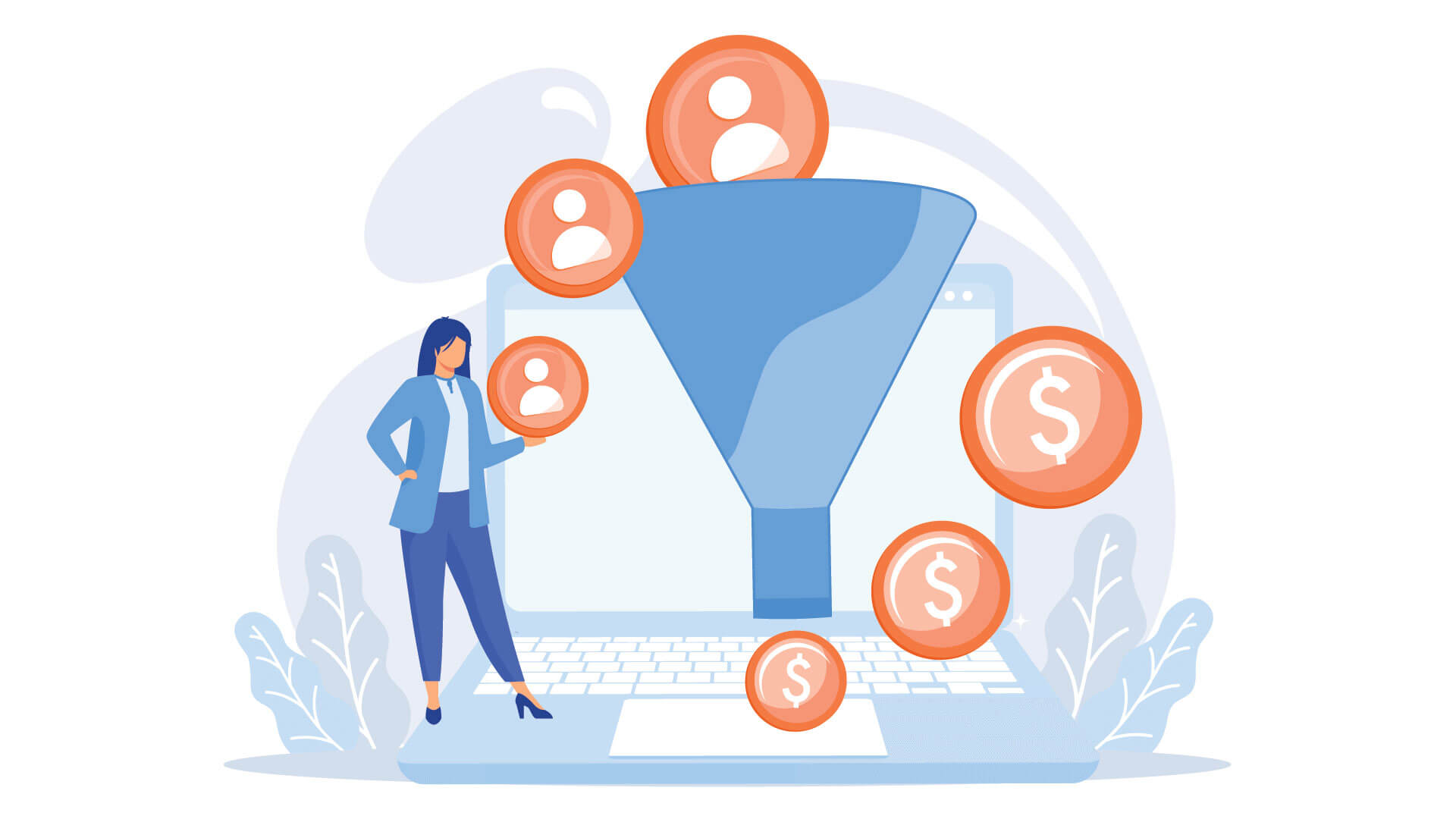Imagine yourself as a business owner, struggling hard to bring in new customers, but sometimes you feel like you’re just playing at guesswork.
Maybe your ads aren’t turning out as well as you had hoped, or perhaps your targeting is not quite right. It gets frustrating, right?
Here’s the thing, there’s a smarter way to do lead generation, and it involves data.
Data analytics is like turning on the light in that room you have been fumbling around in. It paints a clear picture of who your prospective customers are, what matters to them, and how to reach them effectively.
By applying data as a force, you are able to turn conjectures into strategy so that every little effort invested in generating leads will count.
Now, let’s talk about how using data analytics can simplify your lead generation but most importantly make it a lot more powerful, effective, and hence successful.
1. Know Your Audience-Better, Actually Know Them
One of the coolest things about data is that it allows you to know exactly who your audience really is, not just who you think they are.
- Demographics are important: Who has the most interest in what you’re offering? Young professionals? Parents? By deep-diving into demographic data such as age, gender, and location, you can begin to paint a picture of your ideal customer.
- Behavioral data: Which pages do your visitors spend the most time on? Which emails do they open? Data tells you precisely how people engage with your brand so that you can tailor your approach to what they care about. The messaging can be more relevant and personal in nature.
- Psychographics Matter Too: Apart from facts and figures, you have to understand your audience’s mindset. What are their interests? What do they value most? What pain points do they have? Data from surveys or third-party sources may give a deeper insight into what interests your audience.
2. Segmenting Your Audience—Not Everybody’s the Same
The minute you know clearly who your audience is, you then need to segment them into smaller, better-defined groups.
Why? Because one-size-fits-all marketing doesn’t cut it anymore. People want to be noticed and heard, and that’s what segmentation does for you.
- Targeted messaging: Knowing your audience means you speak to specific needs. The busy CEO gets a different message from you than does the little business owner.
You can make your campaigns feel personal and relevant; thus, this naturally leads to better engagement with the help of data analytics. - Diversified funnels for diverse audiences: Instead of putting everyone down the same sales funnel, the data will enable you to take various groups down different funnels. Maybe one segment in your research is ready to buy, and another needs more nurturing. This approach helps in making people move down a path that makes sense to them.
3. Leveraging Predictive Analytics-A Glimpse into What the Future Holds
Consider how much more efficient you could be if you knew which leads were most likely to turn into paying customers before they ever raise their hand. That’s the magic of predictive analytics.
- Lead Scoring Done Right: You can provide a score to each lead based on the history of their behavior, such as how frequently someone opens your emails or visits your website. A lead with a higher score means a likelihood of being converted. This way, it allows your sales team to pay more attention to the hottest lead. It saves time and increases conversion rates.
- Focus Where It Matters: Rather than spreading yourself too thin, predictive analytics enables you to zoom in on the leads that really matter. You can give them the attention they need while you nurture your lower-priority leads until such time as they are ready to move.
4. A/B Testing-Because Trial and Error Works Better with Data
Suppose you had two variants of an email or landing page and wanted to know which would pull in the best results. That’s where A/B testing comes in pretty handy.
- A/B Testing and Learning: Run both versions and let the data tell you which version delivers more clicks or conversions. You are not guessing; you let your audience inform you on what works.
Then you scale up with the implementation across the board to increase chances of success. - Refine as You Go: What’s beautiful about A/B testing is that it’s never really over. You can keep adjusting your messaging, visuals, or even the timing of your campaigns until you nail that sweet spot that drives the most engagement.
5. Tracking Your Traffic-Where Are Your Leads Coming From?
Ever wonder which of your marketing channels brings in the most leads? The answer lies in data analytics.
- Sources Matter: Organic search, social media, email campaigns, and referrals-even knowing which traffic sources are driving leads your way is important. With tools like Google Analytics, you’ll be able to observe those sources and understand which ones drive the best results.
- Double Down on What Works: Once you know which channels are driving the most qualified leads, you can invest more time and resources there. Conversely, you can rework or let go of the channels which aren’t pulling their weight.
6. Making Your Content Personal because Generic Won’t Cut It
Nobody likes being just another name on the list. People want personal touches, and data gives you a way to do that.
- Behavior-Driven Follow-Ups: For example, imagine a lead has spent a lot of time on your site reading about a product feature. Armed with that knowledge, you can send them targeted follow-up emails containing similar content and customer success stories about that feature.
- Segmentized Campaigns: Data lets you create chains of emails, targeting each of those different audience segments. The more personalized the content, the more likely people will engage with it and finally convert.
7. Streamlining with CRM Systems-All Your Data in One Place
Data is powerful, but it’s even more powerful when it’s organized. And that’s where CRM, or Customer Relationship Management, systems come in.
- One-Stop Shop for Your Leads: A good CRM will store all information about your leads in a single location. This greatly simplifies life for your sales team since they’re able to track who said what, when, email, and follow up with ease.
In other words, this is the roadmap through the whole sales process. - More personalized follow-ups: Since everything is tracked, you can make your follow-ups more personal, at better times. Closing a deal is way easier when you know precisely where a lead is in their journey.

8. Conversion Rate Analysis—It’s Not Just About Getting Leads; It’s About Closing Them
After all, it’s all about the bottom line, right? It doesn’t matter how many leads you bring on board, but how many of them convert into paying customers.
- Look for Patterns: Keeping track of conversion rates regularly can help you identify a pattern of what works and what doesn’t work for you. Which channels are yielding the best conversions?
What is that magic message? You may have these insights, allowing you to fine-tune your strategy toward better execution.
- Refine, Refine, Refine: Use this data to continually improve. The more you understand why certain leads convert and others don’t, the more you’ll be able to double down on your efforts into what’s driving growth.
At Zoolch we are a team that’s expertly tailored towards unlocking the power of data analytics for growth, no matter if you’re a dentist, small business owner, or enterprise. Our tailored solutions will empower you to understand your audience with deep dives into demographic, behavioral, and psychographic data, so you can see crystal clear who your ideal customers are.
- Segment Effectively: With our know-how, you will be able to create finely tuned audience segments, together with personalized campaigns that talk directly to your target market.
- Predict Lead Conversions: Our tools let you use predictive analytics to focus on leads likely to convert and save time by increasing your ROI.
- Optimize Your Campaigns: Learn from us how to cut through the noise through A/B testing and granular traffic tracking to scale only what works.
At Zoolch, we know data feels overwhelming, but we make sense of it for you so that you can unlock data-driven lead generation to confidently and effectively grow your business.
Wrapping Up
In today’s fast-paced business world, using data analytics to make educated decisions about your lead generation strategy is not a nicety; it’s a necessity. Data will tell you who is in your audience, help you craft messaging to engage them, and narrow down the right leads for the best optimization of marketing for better returns.
Once you go full steam with a data-driven approach, you are no longer making mere educated guesses; informed decisions begin to set your business up for sustainable growth and success.
With Zoolch at your side, you will finally have expert guidance to get the most out of your data and transform your lead generation strategy once and for all.
